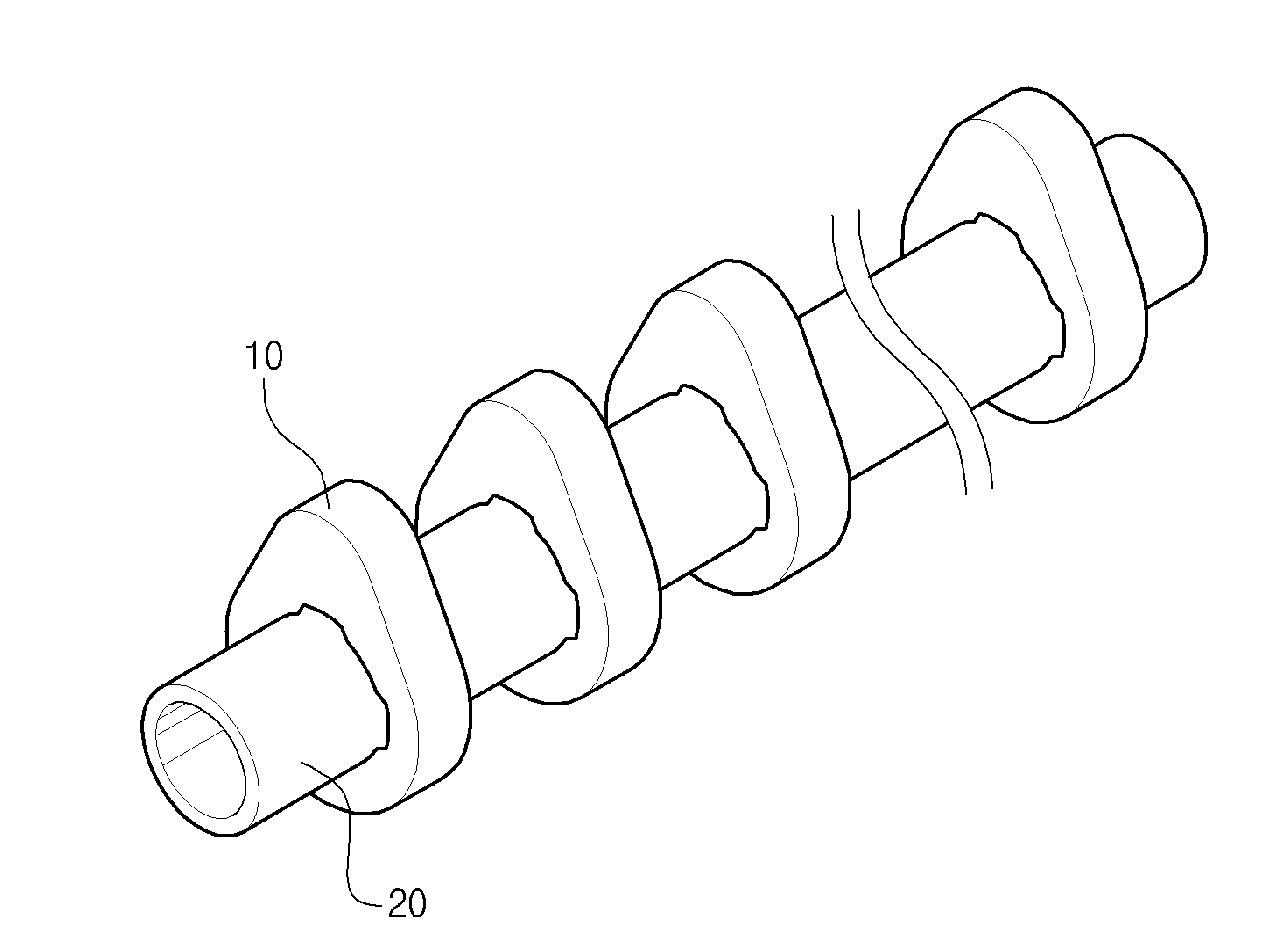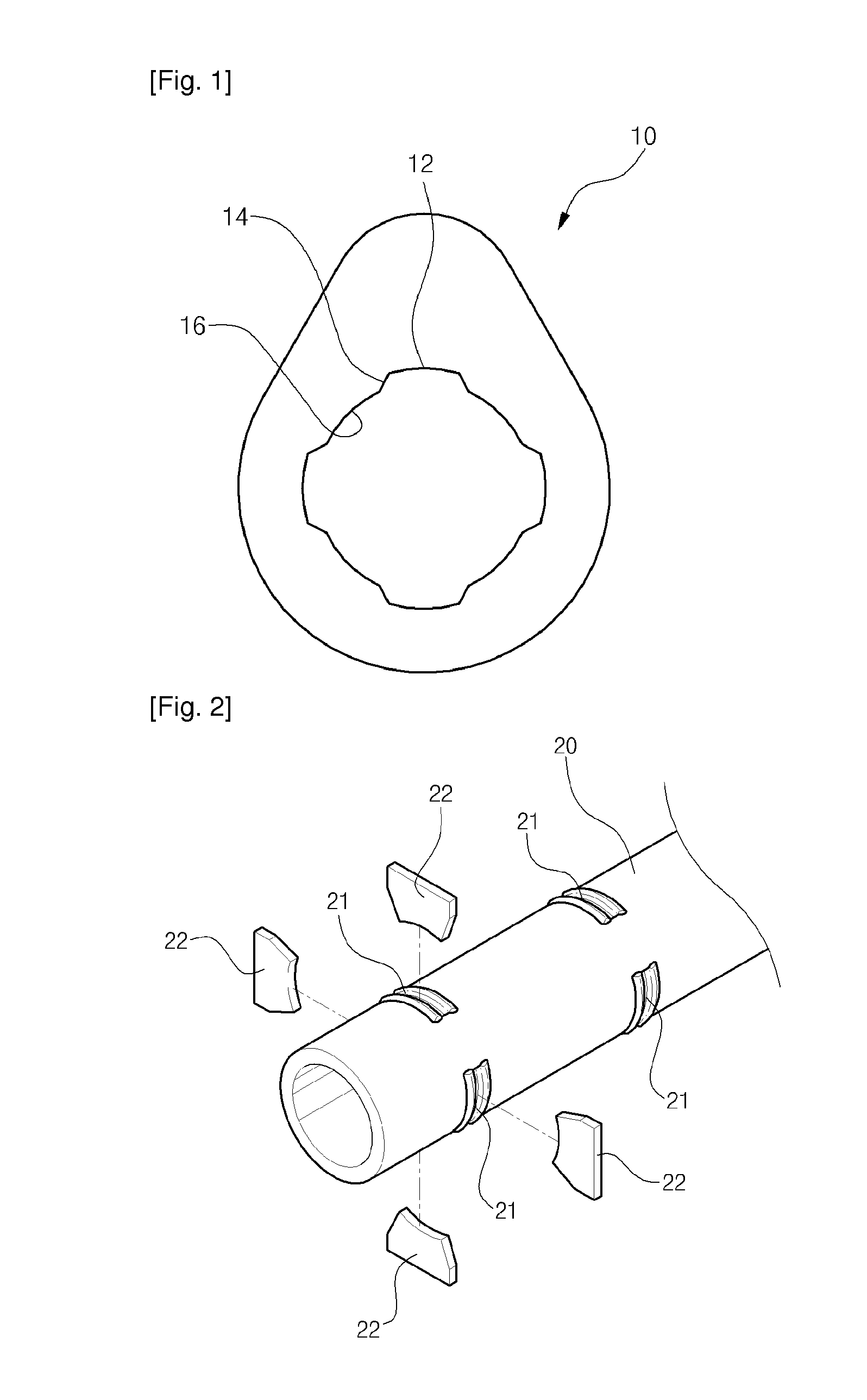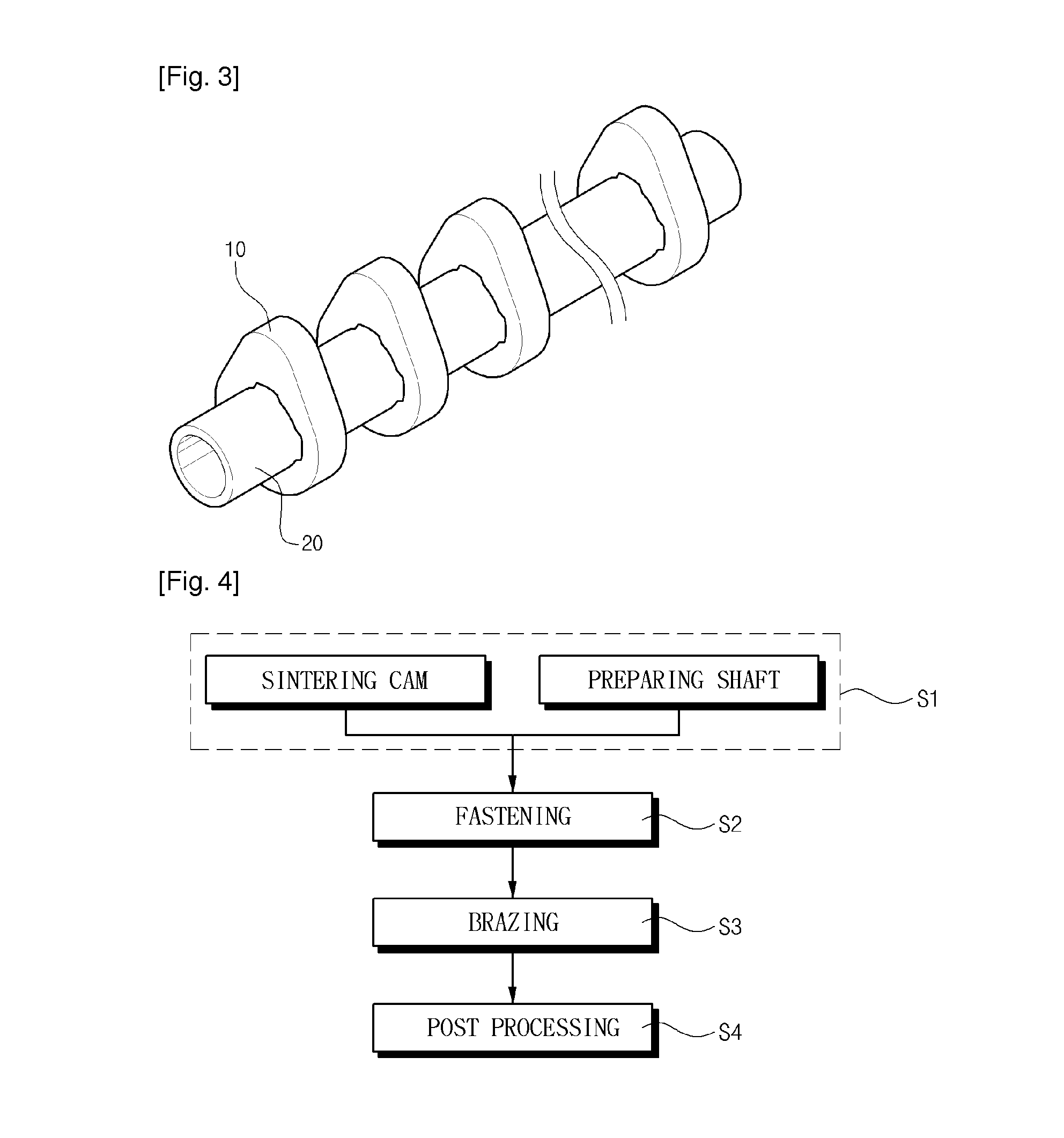Method of Manufacturing Camshaft
a manufacturing method and camshaft technology, applied in the direction of manufacturing tools, machines/engines, and so on, can solve the problems of cracking in the cam, increasing the number of sintering equipment that is very expensive, and taking a long time to manufacture the camshaft, so as to reduce the time for manufacturing the camshaft, increase the camshaft production, and maximize the charging efficiency
- Summary
- Abstract
- Description
- Claims
- Application Information
AI Technical Summary
Benefits of technology
Problems solved by technology
Method used
Image
Examples
Embodiment Construction
[0034]Hereinafter, a preferred embodiment of the present invention will be described in detail with reference to the attached drawings.
[0035]A method of manufacturing a camshaft according to the present invention includes manufacturing a cam 10 in which a depression 12 is formed, and fastening the cam 10 to a shaft 20 provided with a protrusion 21 in such a way that either the cam 10 or the shaft 20 is rotated relative to the other one. After the fastening, the cam 10 is joined with the shaft 20 by brazing rather than sintering.
[Manufacturing Cam Using Main-Sintering]
[0036]FIG. 1 illustrates a cam 10 having depressions 12 according to the present invention.
[0037]The circumferential inner surface of the cam 10 comprises depressions 12 which form a larger diameter, and small diameter portions 16. A ramp 14 is formed between each depression 12 and the adjacent small diameter portion 16.
[0038]The cam 10 having the depressions 12 is sintered after it has been formed. In the present inven...
PUM
| Property | Measurement | Unit |
|---|---|---|
| rotational force | aaaaa | aaaaa |
| bonding strength | aaaaa | aaaaa |
| durability | aaaaa | aaaaa |
Abstract
Description
Claims
Application Information
 Login to View More
Login to View More - R&D
- Intellectual Property
- Life Sciences
- Materials
- Tech Scout
- Unparalleled Data Quality
- Higher Quality Content
- 60% Fewer Hallucinations
Browse by: Latest US Patents, China's latest patents, Technical Efficacy Thesaurus, Application Domain, Technology Topic, Popular Technical Reports.
© 2025 PatSnap. All rights reserved.Legal|Privacy policy|Modern Slavery Act Transparency Statement|Sitemap|About US| Contact US: help@patsnap.com



